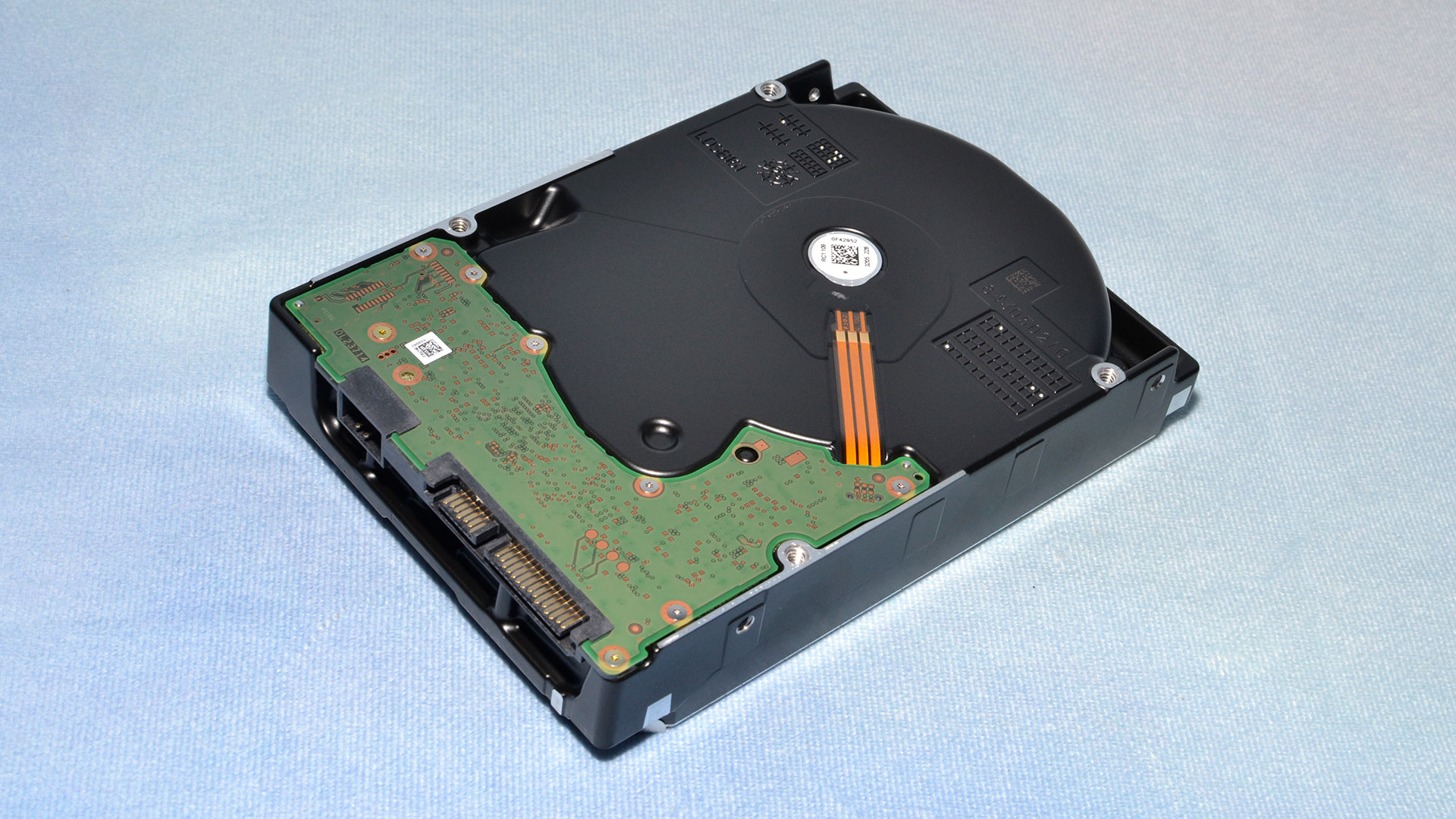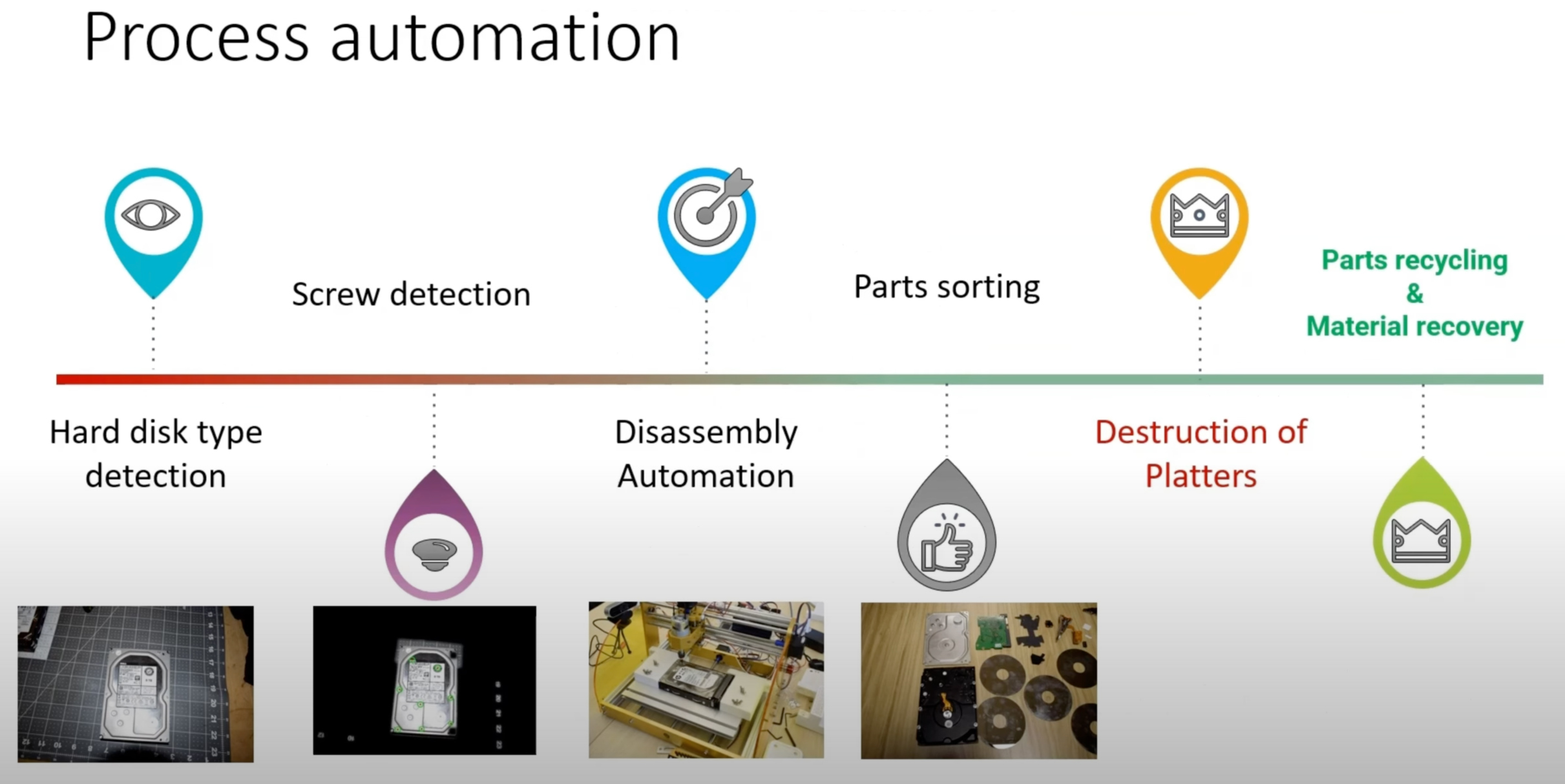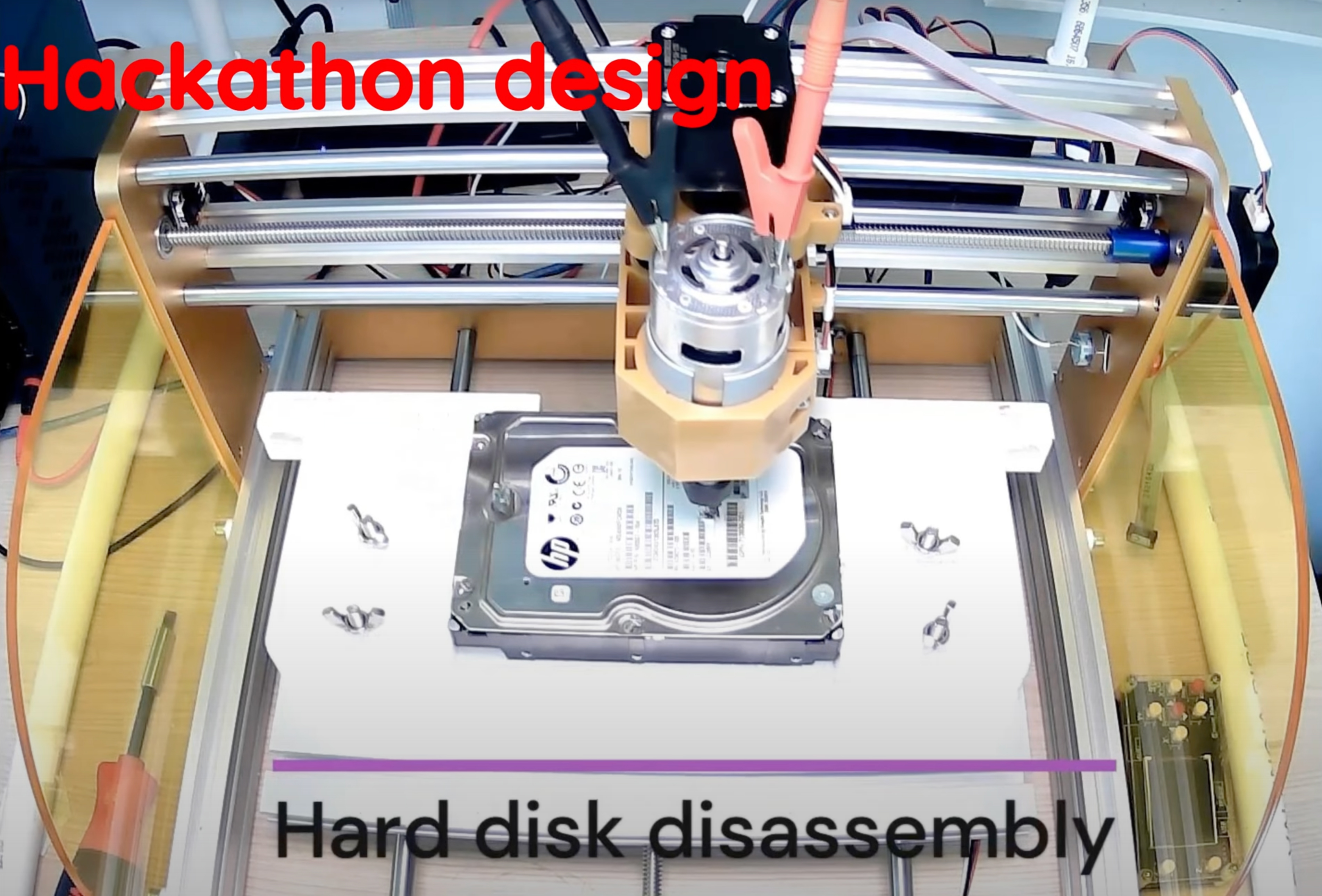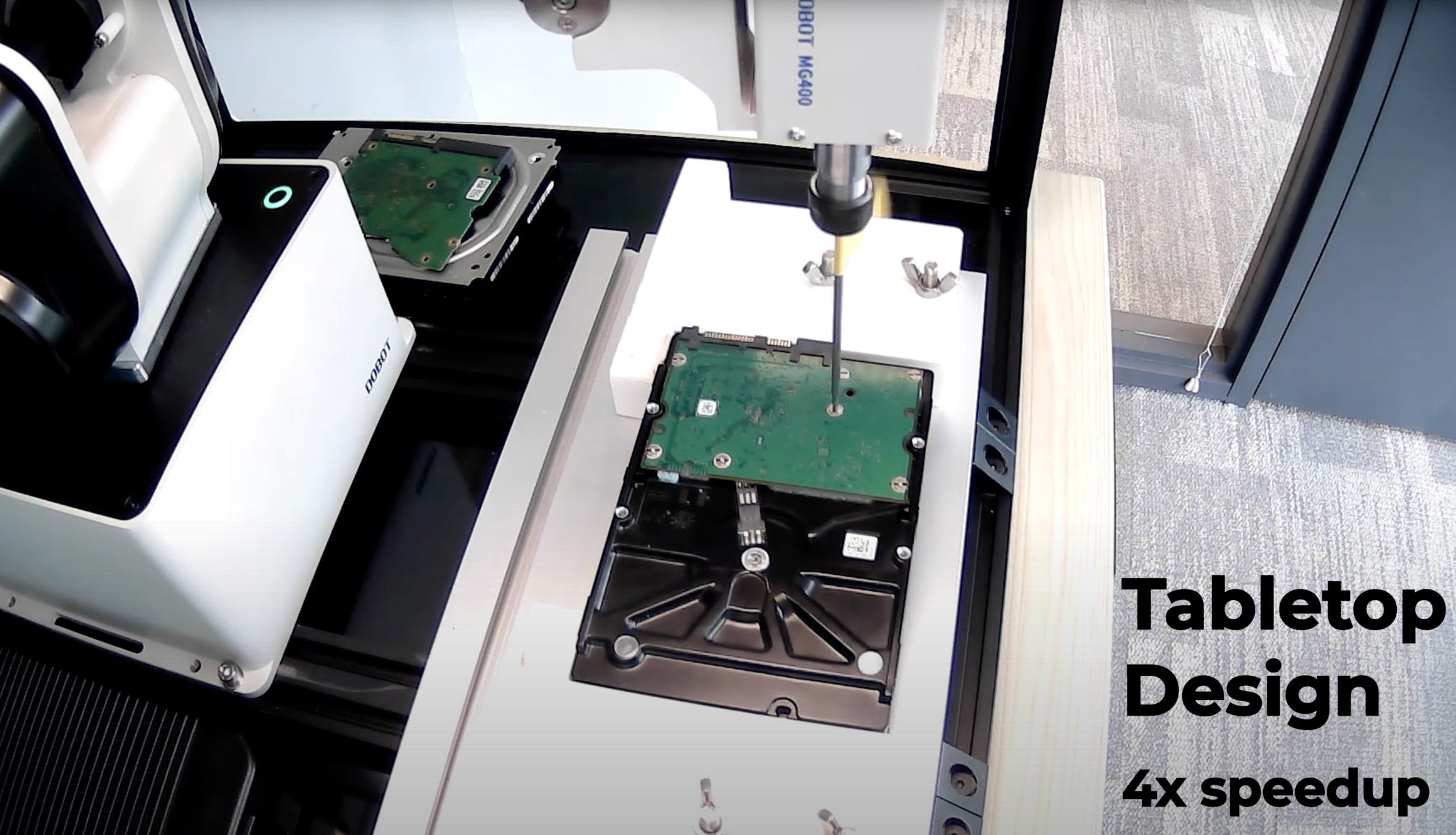
Defective or worn-out hard disk drives usually contain plenty of valuable data recorded on them. But they are also comprised of valuable materials, such as aluminum platters, neodymium magnets, and a stainless steel chassis, just to name a few. So, instead of shredding them to destroy the data, Microsoft invented robots that disassemble them, potentially by the millions, to recycle those valuable materials, reports Blocks & Files.
At the 2022 Global Hackathon, a team led by Ranganathan Srikanth created robots that dismantle hard drives, destroy data by destroying platters, and recycle the remaining parts to extract valuable materials, avoiding the current practice of shredding entire hard drives. The robotic system uses computer vision to recognize different HDD types and locate screws for disassembly. It carefully removes components, destroying only the data-carrying platters, while salvaging parts like magnets and printed circuit boards for reuse.

Microsoft uses dozens of different hard drive models at its data centers, and the vast majority of them place screws in different places, so Microsoft certainly had to implement some kind of AI to dismantle and recycle its HDDs using robots made by Dobot Robotics.
Around 20 to 70 million hard drives reach the end of their lifecycle each year, and in 2022 alone, Microsoft shredded two million hard drives. It is unclear whether the number includes shredded and dismantled/recycled HDDs or just shredded drives, as even at Microsoft, not all HDDs are recycled.


According to Microsoft, this new 'NoShred' approach aims to achieve a 90% reuse and recycle rate of hard drives by 2025. The robots ensure data security by destroying only the data-carrying components while recovering valuable materials like neodymium. It should be noted that in many cases, companies that are supposed to shred their drives do not do that, and these end up collecting dust in storage rooms or going to scrapyards.

Microsoft's efforts extend beyond internal improvements. The company is working with hard drive manufacturers and governments to influence global e-waste management policies. By collaborating and sharing its technology, Microsoft hopes to reduce the environmental impact of e-waste and improve security practices for companies worldwide.
The initiative also reflects Microsoft's sustainability goals, which include becoming carbon-negative by 2050.







